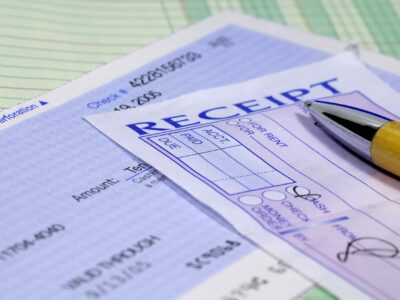19 Apr 5 steps for a fast bookkeeping cleanup plus a checklist Karbon resources

If you need to restore an account to its former state, you can do that more easily. These will keep your client’s books in step with their evolving business activities. Balances on the balance sheet are cumulative, and errors will only disappear if the books are cleaned up.
Year-End Profit and Loss Reports

And in business, the same thing can happen to your accounting books. Once you’ve verified all your documentation is in order, you can put together financial statements for your clients. You should regularly check in to ensure the reporting you are providing is useful for them so you can ensure you are not wasting time producing reports that are not being used. L.A.P. Company, Inc. provides business management and complete bookkeeping services.
Automation for accounting firm bookkeeping services
They can also offer valuable insights and guidance to help you make informed financial decisions for your business. This signifies no unadjusted entries were made in prior years, simplifying tax filing. Finally, verify that loan balances on your balance sheet match year-end loan statements, with separate accounts for interest, late fees, and principal.
Register to start a 14-day trial
An accountant can also give you advice on streamlining and improving your processes for next year. Doing this lets you keep things organized, avoid costly errors and make better financial decisions for your business. You can keep your books organized and set up your corporation or business for success with a little effort.
If they don’t, adjust your records to match your bank or credit card statement to your accounting entries. Getting ready to do bookkeeping cleanup sounds intimidating, but can be done effectively by systematically working through these steps to gather the information you need. Once you’ve cleaned your bookkeeping, your business will be better prepared for growth, tax season, https://www.facebook.com/BooksTimeInc/ and investment opportunities. Software like QuickBooks Online will automatically reconcile accounts if you’ve given the software access to automatic feeds. However, the reconciliation should still be reviewed for accuracy and compared to bank statements.
Bookkeeping for Global CPAs & Accounting Firms
As a small business owner, you can view the balance sheet report as a financial snapshot of your business. Towards the bottom of the report, take note of the section labelled “Retained Earnings.” This line item tracks your company’s net worth over several years. Download this checklist from Acuity, and start optimizing your financials. Simplify your processes with the help of this guided checklist, including bookkeeping cleanup insightful data, helpful resources, and easy-to-use templates.

e. Bank and Credit Card Reconciliation

Sorting out expenses can help you see where your money is going and identify ways to be a https://www.bookstime.com/articles/incremental-cost more profitable business. Clean up your company’s books in one simple, coherent checklist by Acuity. One of the most important is a uniform process for invoicing and payments. If your client sells products, ensure their purchase and sale history is documented and up-to-date. Ensure all employee payments, like salaries, wages, and deductions, are documented, up-to-date, and compliant with all tax requirements. The information in this guide is based on the Bookkeeping Best Practice template from the Karbon Template Library.

- For spick and span books, you might consider upgrading your tried-and-true spreadsheet or paper records to software.
- An important part of the process is ensuring your documentation is properly filed away (whether physically or electronically) so you can find the backup if any questions are raised later.
- To fix bad books due to errors of omission, comb through your records (e.g., receipts).
- In QuickBooks, cleaning up refers to the process of tidying your financial records.
It ensures compliance with regulations, enables better financial decision-making, improves cash flow management, and helps estimate taxable income and plan for tax optimization 3. By achieving accurate bookkeeping through cleanup services, businesses can enhance scalability, minimize risks, and streamline financial analysis for informed decision-making 2. Maintaining accurate financial records is crucial for the success of any business, regardless of its size or industry.
- Closing out your books at the end of your fiscal year helps you wrap up another year of financial activity and prepare for the next.
- By taking these warning signs seriously and initiating a bookkeeping clean-up, you’ll be well on your way to achieving financial clarity and peace of mind.
- Find out if your client’s personal expenses or accounts are part of their QBO file and determine how they will be reported.
- In this blog, we’ll go over everything, from collecting receipts and assuring tax law compliance to reconciling accounts and altering spending categories.
- Bad bookkeeping can also lead to hefty IRS penalties and (gasp!) audits.
- You can always customize your existing checklist to suit your clients based on the issues in their books.
Avoid generic labels like “other” or “miscellaneous,” as these offer little clarity to tax professionals. However, with credit cards, there’s an added layer of complexity—the potential for personal and business expenses to get mixed up. Carefully review each transaction to ensure only business-related charges are reflected in your bookkeeping. If you find any personal expenses on the company credit card, remove them from your business records. By carefully addressing these discrepancies, you can ensure your bank records and your accounting software match, providing you with an accurate picture of your financial situation. Reconciling your accounts is the process of comparing what you record in your accounting books with the transaction on your bank or credit card statement.


No Comments